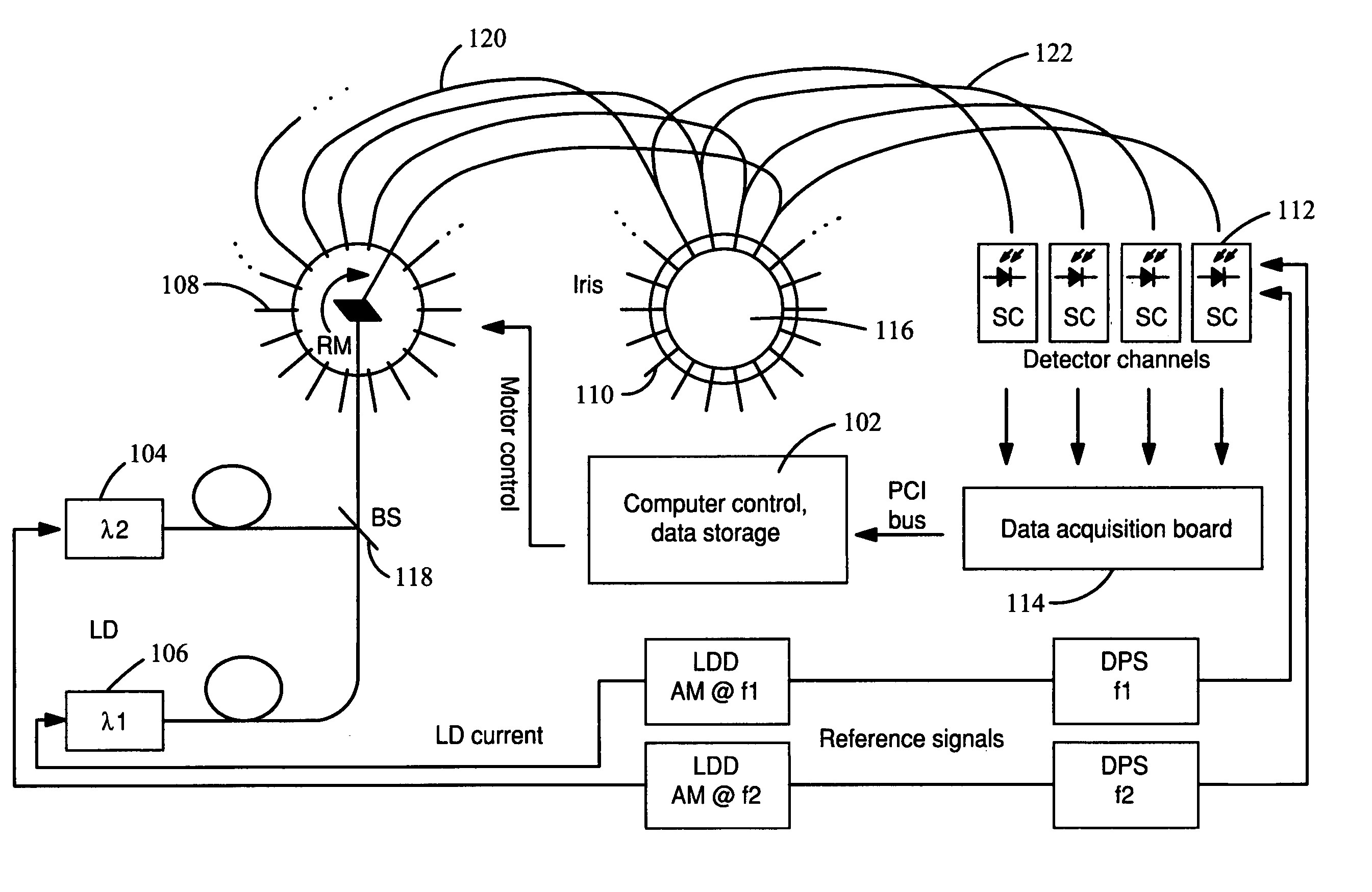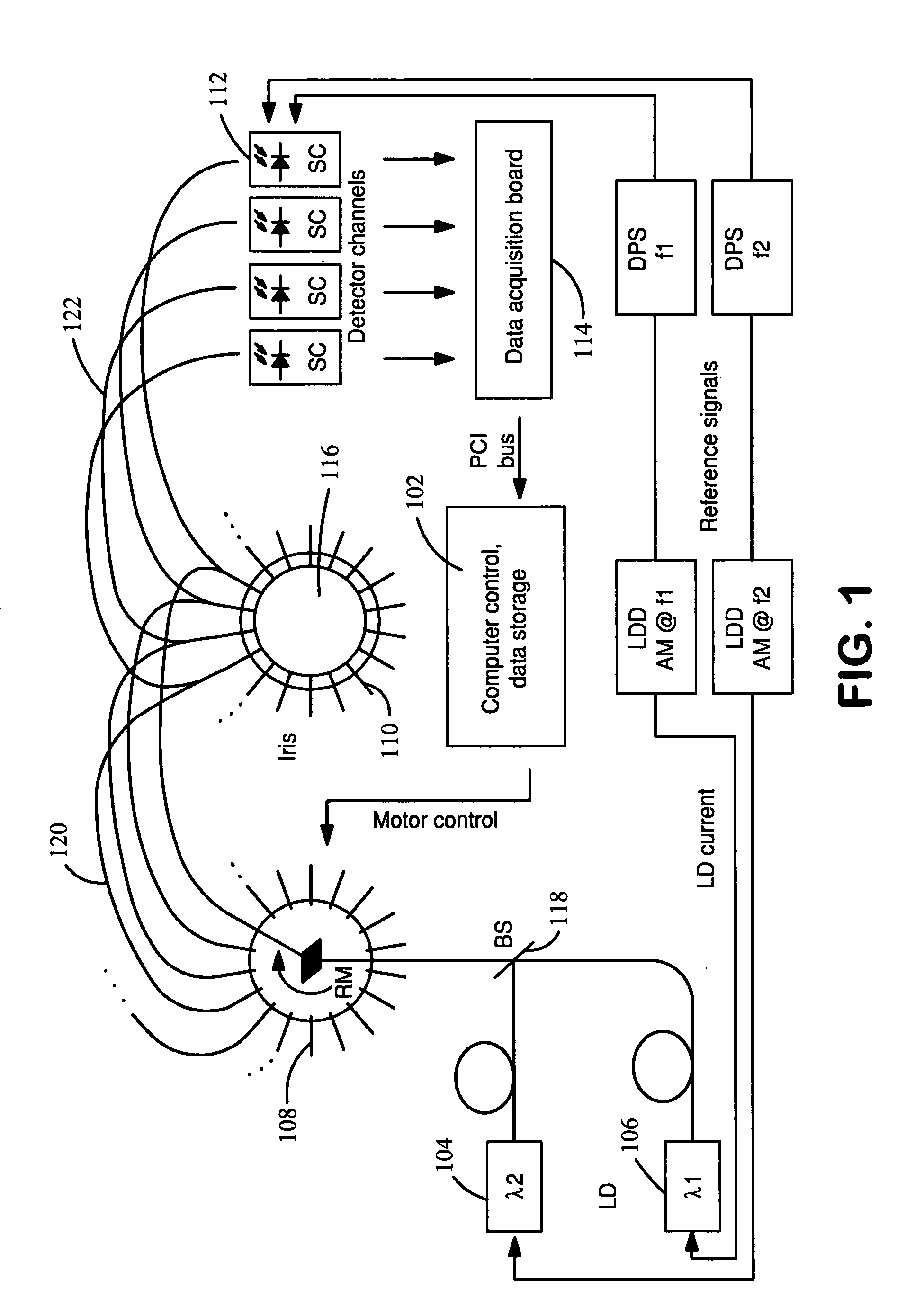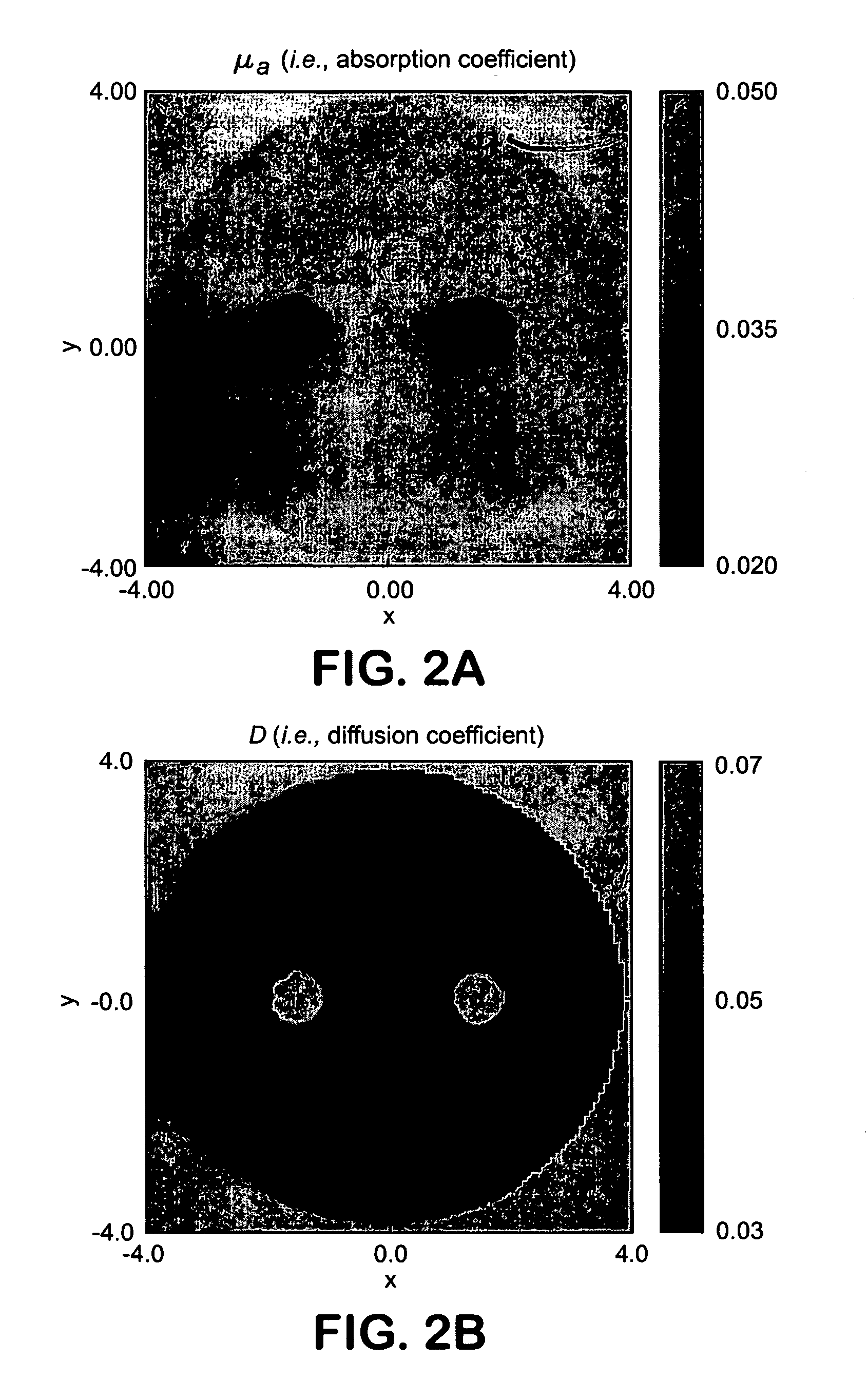Imaging of scattering media using relative detector values
- Summary
- Abstract
- Description
- Claims
- Application Information
AI Technical Summary
Problems solved by technology
Method used
Image
Examples
Embodiment Construction
[0052]Imaging in a scattering medium relates to the methods and techniques of image the internal properties of a medium based on the detection of scattered energy. The typical process for imaging of a scattering medium comprises: (1) selecting a reference medium having known boundary conditions and optical properties which are substantially similar to those of the intended target; (2) determining a weight matrix and an intensity of emerging energy exiting the reference medium at each of a plurality of source points for each of a plurality of detectors located around the reference medium boundary, the determination being made by either actual measurements or solution of the radiation transport equation; (3) measuring actual emerging energy intensities for corresponding source and detector points on a target medium; and (4) solving the perturbation equation for the optical properties of the target based on the measured intensities of energy emerging from the target.
[0053]The present i...
PUM
 Login to View More
Login to View More Abstract
Description
Claims
Application Information
 Login to View More
Login to View More - R&D
- Intellectual Property
- Life Sciences
- Materials
- Tech Scout
- Unparalleled Data Quality
- Higher Quality Content
- 60% Fewer Hallucinations
Browse by: Latest US Patents, China's latest patents, Technical Efficacy Thesaurus, Application Domain, Technology Topic, Popular Technical Reports.
© 2025 PatSnap. All rights reserved.Legal|Privacy policy|Modern Slavery Act Transparency Statement|Sitemap|About US| Contact US: help@patsnap.com



